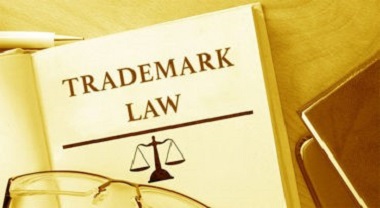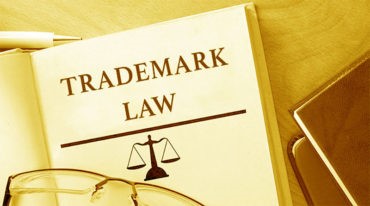The Law Of Trademark In India Act 1999: Infringement And Remedies
Introduction
A trademark is a symbol, word, or phrase used by a corporate organisation or other legal body to distinguish their product from that of another firm and to identify their product. As a result, the trademark act was adopted in 1999 to grant the owner of the mark exclusive rights to use the mark and prohibit unlicensed individuals from doing so. As a result, the logo and name are registered as trademarks under the act of 1999 to protect the brand name and value.
 Trademark Infringement
Trademark Infringement
The trademark legislation of 1999 protects Indian trademarks. Section 29 of the trademark law draws attention to the authorised owner and defines trademark infringement as a violation of the exclusive rights claimed by the registered owner under the trademark’s act of 1999. The trademark infringement is based on the unauthorised use of a brand, and the concerned owner can file a lawsuit against them if the trademark is registered and if the product is not the same, the demand can be made on the grounds of common law, misrepresentation, and unfair commercial practices. In simple terms, trademark infringement occurs when the owner’s exclusive right is breached. Infringement occurs when there is a misunderstanding in the courtroom, and it is the responsibility of the owner or plaintiff to prove the infringement in court.
Certain conditions are not deemed trademark infringement under Section 30 of the Trademark Act. If someone has a licence from the registered trademark owner, it is not considered an infringement because the licence is granted under an assignment agreement. Even yet, if the licensee uses the trademark for goods and services not covered by the assignment agreement, the usage can be considered unlawful.
Types Of Trademark Infringement
A trademark reflects the source and quality of goods or services to a consumer. It demonstrates to a buyer where a product came from and how much he can trust that product based on the brand value associated with it. It signifies that a trademark represents companies or business’s goodwill and brand worth. Infringement against a company’s trademark should be viewed as an attack on the company’s goodwill and brand value. Indirect and Direct trademark infringements are both possible:
Direct Infringement
Producing, selling (attempting to sell), or importing a product by utilising an existing registered brand in an unlawful manner or by a person who does not have the authorization to use it is considered direct trademark infringement.
Indirect Infringement
It’s a common law principle that holds someone liable if they cause a direct infringer to infringe. A person who commits indirect infringement might be held vicariously or contributory accountable. A person will be held accountable for contributory infringement if he is aware of the infringement and materially contributes to the inducement. In the case of an employer-employee connection, vicarious responsibility is commonly used.
Ingredients Of Trademark Infringement
Identical or Deceptively Similar
Infringement occurs when an unauthorised person uses a trademark that is “identical” or “deceptively similar” to a registered trademark. The term “deceptively similar” refers to the fact that the average client or buyer may be unable to distinguish between the marks and mistake them for being of the same brand. It is sufficient to prove trademark infringement if there is a possibility of misrepresentation of the trademark. It has the potential to cause conflict. When a mark is utilised in a deceptively similar manner, it confuses the minds of the general public.
Unauthorised Use Of Trademark
Any trademark infringement occurs only when an unauthorised person uses a registered trademark without the owner’s permission. If a mark or logo is used with the permission of the authorised person, it is not considered a trademark infringement.
Registered Trademark
The owner of a trademark is only protected if the trademark is registered with the Indian trademark registration. In the event of infringement involving an unregistered trademark, the basic principle of passing off can be used to resolve the dispute.
Cosnfusion In The Mind Of Consumer
Consumers’ minds must be thrown into a state of confusion by products and services. Buyers should be aware of trademark infringement even if they are perplexed. Even if a client is aware that a product/service is similar, he or she will choose that product due to the similar look and fake manufacturer price attached to the product (and similar merchandise is available at a lower price, unavailability of the unique product at some point during that period, or any other convenience), trademark infringement will occur. The only criterion under this heading is that the confusion created in the minds of consumers is likely to be linked to the registered trademark.
Unfair Advantages
The term “unfair advantage” or “illegal gain” refers to gaining money by utilising the name, resources, or other assets of another corporation or business. Trademark infringement occurs when a person who is not allowed to use a trademark does so in any way that benefits him (either financially or in terms of market position). A person can acquire an unfair advantage by utilising a registered trademark as his or her trade name or part of his or her trade name.
Remedies Available For Owner
There are two types of remedies accessible to an owner who wants to take legal action against an infringer: Civil and Criminal. According to the jurisdiction, the trademark owner can file a Civil remedy action in District Court.
The following Civil remedies are available for trademark infringement: –
Injunction – A court order prohibiting one individual from engaging in specific conduct. In the case of trademark infringement, it prohibits the individual from using the trademark without permission. There are two types of injunctions: temporary and permanent injunctions. In the case of a temporary injunction, the matter is brought before the court but the court does not have to decide whether there has been an infringement or not. In this scenario, the court might issue a temporary order for a certain period until the court issues final decisions on the topic. In the instance of a perpetual injunction, the court’s decision is of a permanent character and is based on the suit.
Damages– Damages in the form of compensation received by the registered owner in the form of recoupment of losses incurred as a result of trademark infringement. The monetary value or brand injury will be recovered in damages. After evaluating the actual and anticipated loss of the owner, the court might award damages for trademark infringement.
Costs of Proceeding– By court order, the defendant is responsible for all of the appellant’s costs of the proceeding.
Account of Profits– Profits obtained in the form of damages from the products or services as a result of trademark infringement are referred to as profits.
Criminal Remedy
Infringement of a trademark is a cognizable violation under the trademark legislation, and the police have the jurisdiction to file an FIR and begin an investigation. Because trademark infringement is a continuing offence, there is no statute of limitations for filing a lawsuit.
Section 134 of the Trademark Act specifies the jurisdiction in which a complaint about infringement against an infringer may be filed. The trademark owner must file an infringement suit at the district court, which is located within the local jurisdiction of the trademark owner who carries on or resides in trade and business activities.
Landmark Judgements Of Trademark Infringement
MilmetOftho Industries and others (MOI) v. Allergan Inc. (AI)[2004]
The name “OCUFLOX” for MOI’s eye and ear treatment was allegedly formed from a combination of the terms “ocular,” which refers to the eyes, vision, or sight, and “ciprofloxacin hcl,” which is an antibacterial agent used in the medicine.
The mark “OCULFOX” was claimed by AI to be the name under which their drug was sold. The substance “ofloxacin” was used in the product, which gave it this name. In 1996, AI secured an ex-parte order against MOI for passing-off, which was later vacated in 1997.
A well-known international brand was given trademark protection by the Hon`ble Supreme Court. An Indian business was barred from using the trademark OCUFLOX by the court. The decision was made although the mark has never been used or registered in India. The respondent was the first to enter the market and use the mark, according to the court. If the respondent is the first to join the global market, it doesn’t matter if they haven’t used the mark in India. In the realm of health care, it is critical to avoid any possibility of deceit or confusion, while also ensuring that the public interest is not threatened.
The Coca Cola Company v. Bisleri Pvt. Ltd. [2009]
It is unavoidable to bring up the famous case of Coca-Cola and Bisleri over the trademark Maaza, in which Bisleri assigned its trademark Maaza to Coca-Cola to sell and export products in and out of India, and then filed a trademark application in Turkey shortly after. The trademark rights were given to Coca-Cola, and Bisleri could not use the trademark in or outside of India.
Zara Food v. Zara Fashion [2015]
For the brand name Zara, there is a case of food industry vs. fashion. It is a well-known fashion brand with substantial operations all over the world that has opened a restaurant in Delhi with the same name. A customer will likely mistake one for the other and believe the restaurant was founded by the fashion house. Hon`ble Delhi High Court decided against it. Zara has had a presence in India since 2010 when it built its first store through a joint venture, and it has also applied for several trademarks. The restaurant was obliged to change its name, and it now goes by the moniker Tapas Bar.
Conclusion
In India, the demand for trademark registration is growing by the day, demonstrating that people are becoming more aware of the importance of protecting their products. Infringement of trademarks is a typical occurrence nowadays. Although there are various solutions to deal with the problem, not all of them are done properly. In some cases, infractions occur within the company, resulting in a decrease in the product’s brand value. For products and services, trademark registration is required to protect the brand from trademark infringement.
Author: Bipul Kumar – a student of Chanakya National Law University (Patna), in case of any queries please write back us via email at support@ipandlegalfilings.com or contact us at IP And Legal Filings.

 Trademark Infringement
Trademark Infringement

